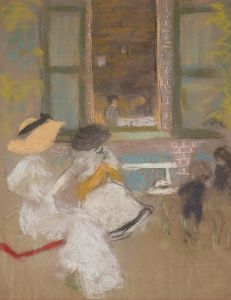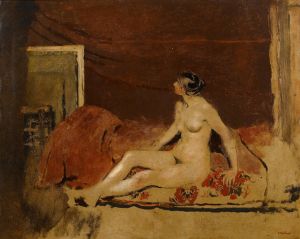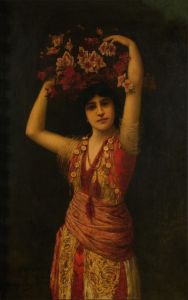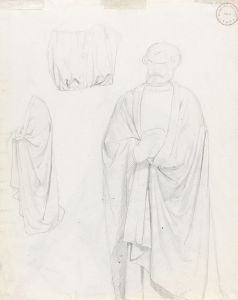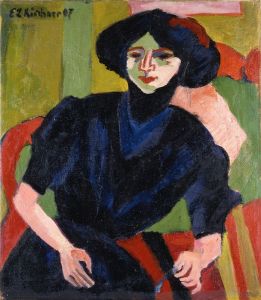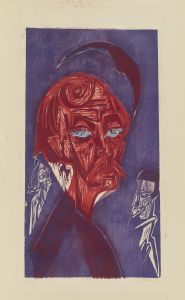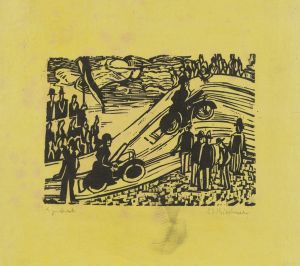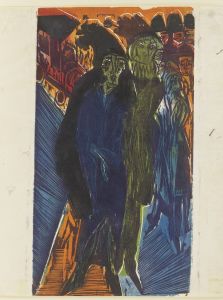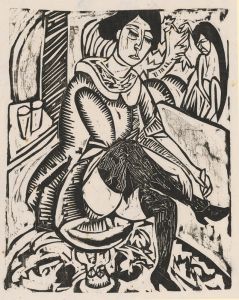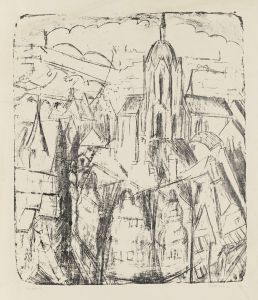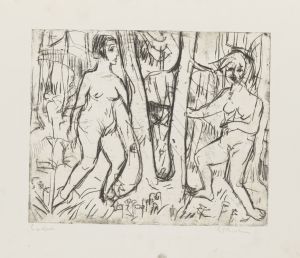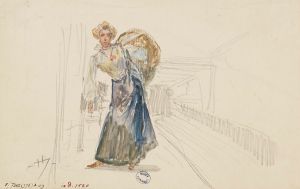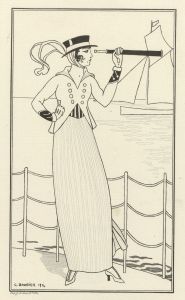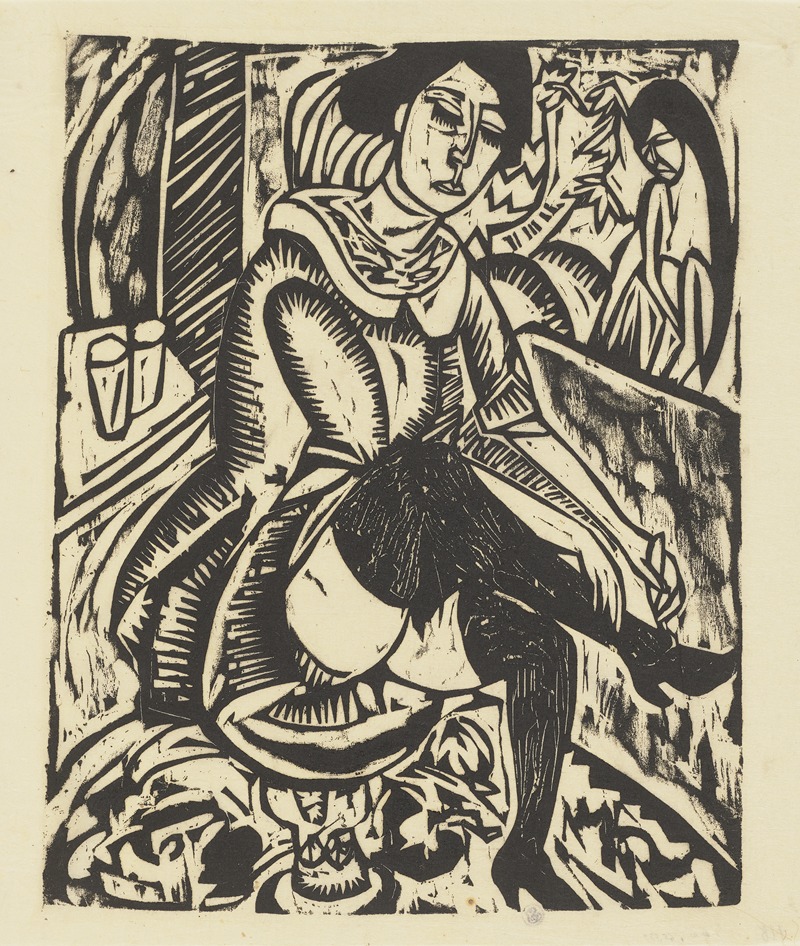
Frau, Schuh zuknüpfend
A hand-painted replica of Ernst Ludwig Kirchner’s masterpiece Frau, Schuh zuknüpfend, meticulously crafted by professional artists to capture the true essence of the original. Each piece is created with museum-quality canvas and rare mineral pigments, carefully painted by experienced artists with delicate brushstrokes and rich, layered colors to perfectly recreate the texture of the original artwork. Unlike machine-printed reproductions, this hand-painted version brings the painting to life, infused with the artist’s emotions and skill in every stroke. Whether for personal collection or home decoration, it instantly elevates the artistic atmosphere of any space.
Ernst Ludwig Kirchner was a prominent German expressionist painter and one of the founding members of the influential art group Die Brücke (The Bridge), which played a crucial role in the development of modern art in the early 20th century. Kirchner's work is characterized by its bold use of color, dynamic compositions, and a focus on the human figure, often exploring themes of modernity and urban life.
"Frau, Schuh zuknüpfend" is one of Kirchner's notable works, created during a period when he was deeply engaged with the expressionist movement. The title translates to "Woman, Tying Her Shoe," which reflects the everyday subject matter that Kirchner often depicted in his paintings. This piece exemplifies his interest in capturing intimate, candid moments of daily life, rendered with his distinctive style.
The painting showcases Kirchner's typical use of vibrant colors and expressive brushwork. His approach often involved distorting forms and perspectives to convey emotional intensity and psychological depth. In "Frau, Schuh zuknüpfend," the figure of the woman is likely depicted with elongated limbs and exaggerated features, a common trait in Kirchner's portrayal of the human body. This stylistic choice serves to emphasize the emotional and physical tension within the scene.
Kirchner's work was heavily influenced by the rapid changes occurring in society during the early 20th century, including the rise of industrialization and urbanization. His paintings frequently reflect the complexities and anxieties of modern life, and "Frau, Schuh zuknüpfend" can be seen as part of this broader exploration. The intimate act of tying a shoe, while seemingly mundane, is imbued with a sense of immediacy and presence, capturing a fleeting moment in time.
Throughout his career, Kirchner was deeply influenced by non-European art forms, particularly African and Oceanic art, which he encountered through museum collections and exhibitions. These influences are evident in his use of simplified forms and bold, contrasting colors, which can also be seen in "Frau, Schuh zuknüpfend." Kirchner's interest in these art forms was part of a broader trend among expressionist artists, who sought to break away from traditional European artistic conventions and explore new visual languages.
Kirchner's work, including "Frau, Schuh zuknüpfend," has been celebrated for its innovative approach to form and color, as well as its ability to convey the emotional and psychological complexities of modern life. His contributions to the expressionist movement have left a lasting impact on the development of modern art, influencing subsequent generations of artists.
Despite facing personal and professional challenges, including the trauma of World War I and struggles with mental health, Kirchner remained a prolific artist throughout his life. His legacy continues to be recognized and celebrated in major art institutions around the world, where his works are displayed as part of the broader narrative of 20th-century art history.





